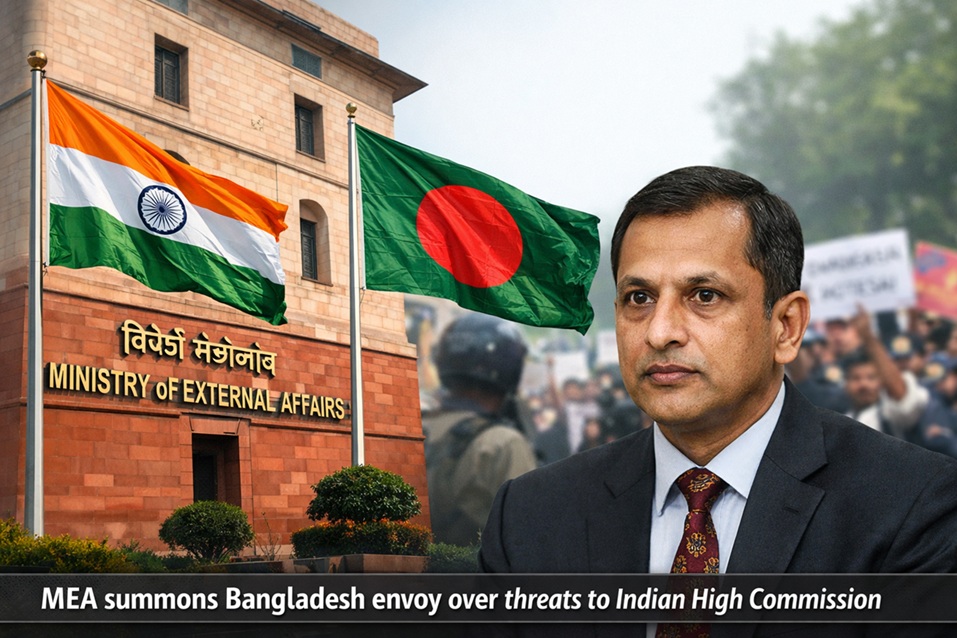Finland has once again been named the happiest country in the world, with a score of 7.741, according to the annual World Happiness Report. The World Happiness Report is an annual publication that measures the subjective well-being of people in countries around the world. It ranks countries based on various factors such as GDP per capita, social support, healthy life expectancy, freedom to make life choices, generosity, and freedom from corruption.
Highlights of the World Happiness Report 2024:
The World Happiness Report 2024 offers some interesting insights into happiness across generations.
Focus on Generational Happiness: This year’s report focuses on happiness at different life stages, moving beyond just national rankings.
Finland Retains the Spot of Happiest Country: For the seventh year running, Finland holds the top spot as the happiest country globally. Other Nordic nations like Denmark, Iceland, and Sweden follow closely behind. Nordic countries dominate the top rankings, with Denmark, Iceland, and Sweden following Finland.
Drop in happiness rankings: The United States and Germany see a significant drop in happiness rankings. This decline is particularly evident among younger generations.
Happiness Across Ages: The report highlights a surprising trend: in North America, older adults report higher happiness compared to younger ones. This contrasts with the pattern observed in many other regions.
India’s Ranking : India maintains its position from last year at 126th. which is associated with older age, education, and social caste.
Why is Finland the happiest country in the world?
Finland has claimed the title of “World’s Happiest Country” for the seventh consecutive year. According to Finnish philosopher and psychology researcher Frank Martela, the happiness of Finnish people can be attributed to their strong sense of community and relatedness, their acts of kindness towards others, and their clear sense of purpose. He believes that Finnish people’s happiness stems from their strong social connections and their ability to rely on others in times of need. According to the Organisation for Economic Cooperation and Development (OECD) Better Life Index, Finland excels in education, work-life balance, environmental quality, social connections, safety, and life satisfaction. Furthermore, the life expectancy at birth in Finland is approximately 82 years, with women having an average life expectancy of 85 years and men having an average life expectancy of 79 years. Overall, Finland’s consistent ranking as the happiest country in the world can be attributed to its strong sense of community, high levels of social support, and the overall satisfaction and well-being of its citizens.
List of the Top Ten Countries and India’s Rank:
While the top ten countries on the list remained relatively unchanged, there were some shifts within the top 20. Costa Rica and Kuwait moved up to 12th and 13th place, respectively, while the United States and Germany dropped out of the top 20 entirely. The United States fell from 15th place to 23rd place this year.
The happiest Country in the world
| Rank | Country |
| 1 | Finland |
| 2 | Denmark |
| 3 | Iceland |
| 4 | Sweden |
| 5 | Israel |
| 6 | Netherlands |
| 7 | Norway |
| 8 | Luxembourg |
| 9 | Switzerland |
| 10 | Australia |
| 11 | New Zealand |
| 13 | Kuwait |
| 15 | Canada |
| 16 | Belgium |
| 17 | Ireland |
| 20 | United Kingdom |
| 23 | US |
| 28 | Saudi Arabia |
| 51 | Japan |
| 60 | China |
| 72 | Russia |
| 80 | Indonesia |
| 93 | Nepal |
| 105 | Ukraine |
| 108 | Pakistan |
| 118 | Myanmar |
| 126 | India |
| 128 | Srilanka |
| 129 | Bangladesh |
| 143 | Afghanistan |
Why India’s Rank has not Improved
India’s ranking on the World Happiness Report hasn’t improved significantly for a few reasons:
Socioeconomic Inequality: A vast gap exists between rich and poor in India. The happiness reports consider factors like income inequality, which can significantly drag down the overall happiness score.
Infrastructure and Public Services: Inadequate infrastructure and public services, such as healthcare, education, and sanitation, continue to be major concerns in India. Poor access to essential services affects the quality of life and contributes to unhappiness among citizens.
Social Issues: Corruption, poverty, and a lack of access to quality healthcare can be significant burdens on well-being. (India Ranks 93rd Out of 180 Countries in Global Corruption Index 2023) Though the central government has started taking initiatives to address social concerns, the path is still long.
Stress and Work-Life Balance: Long working hours and intense work cultures can contribute to stress and lower life satisfaction.
Environmental Degradation: India grapples with significant environmental challenges, including air and water pollution, deforestation, and climate change. Environmental degradation can have adverse effects on health, livelihoods, and overall well-being, impacting happiness levels.
Focus on Material Gains: While India’s economy is growing, the happiness report suggests that focusing solely on material wealth might not translate to greater happiness.
What can we do about it?
Improving the happiness score is not only dependent on government initiatives but also on social and individual initiatives as well. Improving happiness is a multifaceted effort that can be done by addressing various factors that contribute to well-being. Here are some key approaches:
Government Initiatives:

Economic equity: policies that bridge the income gap between rich and poor. This is not an easy task to achieve, as approx. 68.8% of the population lives in rural India, with a huge disparity in income. As per the Oxfam report, the richest 1% owns approximately . 40.5% of India’s wealth.
Improved Healthcare: Increased access to quality healthcare and mental health services throughout the country. The Ayushman Scheme has been implemented for families living below the poverty line. Soon, the middle class will need to be included in the scheme.
Work-Life Balance: Encouraging regulations or cultural shifts towards healthier work-life balance, potentially with shorter workweeks or flexible work arrangements.
Combating Social Issues: Addressing corruption, poverty, and environmental concerns
Community and Individual Action:
Social Connection: Other than strengthening family bonds, there is a need to foster stronger social connections within communities and among people of different cultures.
Focus on Wellness: encouraging healthy lifestyles that prioritise physical and mental well-being. This could include promoting activities like yoga or meditation.
Intrinsic Values: Shifting focus from purely materialistic goals towards appreciating intrinsic values like relationships, community, and personal growth.
Learning from Happier Countries: studying and adapting practices from nations consistently ranking high in happiness reports, such as Finland’s emphasis on social trust and strong social safety nets.
Other Factors:
The Happiness Index: India’s Happiness Report considers six key factors: income, health, relationships, freedom, trust/corruption, and community. Focusing on improvements in these areas can significantly impact the national score.
Top Performers within India: Learning from happier states within India, like Gujarat with its lower unemployment rates and advanced infrastructure, can provide valuable insights.
“While economic and infrastructural growth are crucial, the World Happiness Report suggests that they aren’t the sole factors in a nation’s well-being. There is a need for a cultural shift that prioritises social connection, personal fulfilment, and a healthy work-life balance alongside economic progress. As the Lok Sabha Election 2024 is around the corner, we can only hope the newly elected government will take steps towards creating a positive, better, and fulfilling future for us.”





